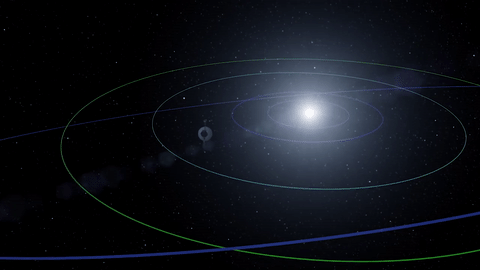Dive into your creative stream
Exploaration - Blog Posts
Voyager: The Space Between
Our Voyager 1 spacecraft officially became the first human-made object to venture into interstellar space in 2012.

Whether and when our Voyager 1 spacecraft broke through to interstellar space, the space between stars, has been a thorny issue.
In 2012, claims surfaced every few months that Voyager 1 had “left our solar system.” Why had the Voyager team held off from saying the craft reached interstellar space until 2013?

Basically, the team needed more data on plasma, which is an ionozied gas that exists throughout space. (The glob of neon in a storefront sign is an example of plasma).

Plasma is the most important marker that distinguishes whether Voyager 1 is inside the solar bubble, known as the heliosphere. The heliosphere is defined by the constant stream of plasma that flows outward from our Sun – until it meets the boundary of interstellar space, which contains plasma from other sources.

Adding to the challenge: they didn’t know how they’d be able to detect it.
No one has been to interstellar space before, so it’s like traveling with guidebooks that are incomplete.
Additionally, Voyager 1’s plasma instrument, which measures the density, temperature and speed of plasma, stopped working in 1980, right after its last planetary flyby.

When Voyager 1 detected the pressure of interstellar space on our heliosphere in 2004, the science team didn’t have the instrument that would provide the most direct measurements of plasma.
Voyager 1 Trajectory
Instead, they focused on the direction of the magnetic field as a proxy for source of the plasma. Since solar plasma carries the magnetic field lines emanating from the Sun and interstellar plasma carries interstellar magnetic field lines, the directions of the solar and interstellar magnetic fields were expected to differ.
Voyager 2 Trajectory
In May 2012, the number of galactic cosmic rays made its first significant jump, while some of the inside particles made their first significant dip. The pace of change quickened dramatically on July 28, 2012. After five days, the intensities returned to what they had been. This was the first taste test of a new region, and at the time Voyager scientists thought the spacecraft might have briefly touched the edge of interstellar space.

By Aug. 25, when, as we now know, Voyager 1 entered this new region for good, all the lower-energy particles from inside zipped away. Some inside particles dropped by more than a factor of 1,000 compared to 2004. However, subsequent analysis of the magnetic field data revealed that even though the magnetic field strength jumped by 60% at the boundary, the direction changed less than 2 degrees. This suggested that Voyager 1 had not left the solar magnetic field and had only entered a new region, still inside our solar bubble, that had been depleted of inside particles.

Then, in April 2013, scientists got another piece of the puzzle by chance. For the first eight years of exploring the heliosheath, which is the outer layer of the heliosphere, Voyager’s plasma wave instrument had heard nothing. But the plasma wave science team had observed bursts of radio waves in 1983 and 1984 and again in 1992 and 1993. They determined these bursts were produced by the interstellar plasma when a large outburst of solar material would plow into it and cause it to oscillate.

It took about 400 days for such solar outbursts to reach interstellar space, leading to an estimated distance of 117 to 177 AU (117 to 177 times the distance from the Sun to the Earth) to the heliopause.
Then on April 9, 2013, it happened: Voyager 1’s plasma wave instrument picked up local plasma oscillations. Scientists think they probably stemmed from a burst of solar activity from a year before. The oscillations increased in pitch through May 22 and indicated that Voyager was moving into an increasingly dense region of plasma.
The above soundtrack reproduces the amplitude and frequency of the plasma waves as “heard” by Voyager 1. The waves detected by the instrument antennas can be simply amplified and played through a speaker. These frequencies are within the range heard by human ears.

When they extrapolated back, they deduced that Voyager had first encountered this dense interstellar plasma in Aug. 2012, consistent with the sharp boundaries in the charged particle and magnetic field data on Aug. 25.
In the end, there was general agreement that Voyager 1 was indeed outside in interstellar space, but that location comes with some disclaimers. They determined the spacecraft is in a mixed transitional region of interstellar space. We don’t know when it will reach interstellar space free from the influence of our solar bubble.

Voyager 1, which is working with a finite power supply, has enough electrical power to keep operating the fields and particles science instruments through at least 2020, which will make 43 years of continual operation.

Voyager 1 will continue sending engineering data for a few more years after the last science instrument is turned off, but after that it will be sailing on as a silent ambassador.
In about 40,000 years, it will be closer to the star AC +79 3888 than our own Sun.
And for the rest of time, Voyager 1 will continue orbiting around the heart of the Milky Way galaxy, with our Sun but a tiny point of light among many.
Make sure to follow us on Tumblr for your regular dose of space: http://nasa.tumblr.com.